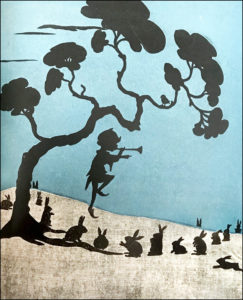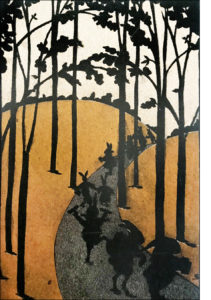
Among the treasures that entered the public domain on January 1, 2019 is The Tale of the Enchanted Bunnies, a 1923 children’s book by Ruth Sawyer. Described as “a story teller with consummate gifts whose tales both oral and written should be characterized as living folk-art,”[1] Sawyer was a prolific author who started the first storytelling program for children at the New York Public Library in 1910. Sawyer won the Newbery Medal for her 1936 children’s book Roller Skates and received the Laura Ingalls Wilder Award in 1965 for her lifetime achievement in children’s literature.
Enchanted Bunnies follows Billy and Budge Bates as they break the spells placed on Lady Rabbit’s collection of silver, brass, china, alabaster, and crocheted bunnies, bringing them to life to share the events leading up to their enchantment. As Everett McNeil wrote in his October 14, 1923 review of Enchanted Bunnies in the New York Times, “children adore bunnies, even the make-believe ones… [t]his is why the little girls and boys who get Ruth Sawyer’s book, The Tale of the Enchanted Bunnies will themselves be enchanted.”[2]

The opportunity to freely translate works to help fill the gap in stories available to children in their mother tongue is one reason to celebrate that the Enchanted Bunnies and other 1923 children’s book gems are now in the public domain. While English-speaking children have around 55,000 picture books available to them, there are only 2,000 in Portuguese and a mere 500 in Zulu.[3] Like many of her books, Enchanted Bunnies was inspired by the legends and folk tales that Sawyer gathered from various countries. Now that the book is in the public domain—more than 95 years after its initial publication—it is fitting that it is now free to be translated into any language for children around the world to enjoy.
[1] Chevalier, Tracy (ed.), Twentieth-Century Children’s Writers, St. James Press, 1989, p. 854.
[2] McNeil, Everett, What Became of the Pied Piper, New York Times, Oct. 14, 1923.
[3] For more details, see www.bookhunger.org.
Discover more from Authors Alliance
Subscribe to get the latest posts sent to your email.
